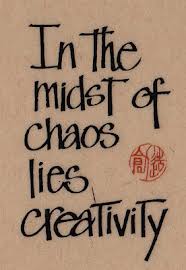Innovation & Creativity

Moonstarsandpaper.blogspot via Google
Innovation and creativity require willing dips into chaos and uncertainty.
- Are you and your team ready to do that?
- Will your organization’s culture support that?
- or will it get in the way?
Creativity requires the courage to let go of certainties. ~ Erich Fromm
Innovation is all the buzz right now. Finding new and better ways to do more, faster and with less! It’s a way to get ahead of the competition and to leverage your investments.
Something new …
Innovation isn’t something that happens on demand. You can’t plan it into existence (although you can plan it out of existence). Innovation is coming up with something genuinely new. It’s not the latest iteration in a series, or the newest incremental change to something already known. It’s something that’s currently unknown, maybe unknowable – definitely unpredictable and unexpected.
Letting go …
Innovation requires letting go of control – of ideas about how things “should” be, of “having answers.“ It’s about surrendering to “not knowing.” It’s embracing creativity and mystery in all its unknown (maybe unknowable) glory.
Exciting, scary and dangerous
Innovation sounds exciting – and sometimes it is! It can be incredibly invigorating and challenging and rewarding. It can also be scary – and potentially dangerous – depending on how you measure success and how well you’ve thought things through. Just like anything with real risk, no matter how prepared you are, there is still the fall or the leap – and the very real lack of certainty about what’s coming.
Making it happen is difficult – it’s like being “creative on demand“ or deciding you’re going to have “quality time” with your kids. Sometimes the muse shows up and sometimes she plays hard to get. The good news – you can do things to invite innovation, and even more things to make sure you don’t shut it down.
Inviting innovation
Inviting innovation happens at the individual and system levels at the same time. Hiring creative people is a first step followed immediately by making sure you don’t then drive their creativity underground with your rules and compensation system and hierarchy.
Encourage risk and failure
If you say you want innovation, you not only have to allow for risk and failure, you have to build them in, encourage them, reward them. If you only want innovation that’s safe (an oxymoron, really), you’re going to be disappointed – you’ll get iteration and incremental improvements at best. The good news – there are ways to support risk and failure and still be responsible.
Outsourcing innovation
So, is that a good idea? The upside … it’s probably cheaper. The downside … first, it’s not your people that are getting better at innovating. Second, you’re only going to get innovation in areas in which you plan for it, which is probably a really small box compared to where it just might show up if you create a culture that invites innovation wherever it’s needed. And third, innovation is the way of the future. It’s not enough to have a “department of innovation.” What you need is an organization that’s designed to invite and support innovation wherever it shows up, and people that are willing to get in there and play on the edge. That’s what it will take to thrive in the VUCA future we’re moving into at breakneck speed.
